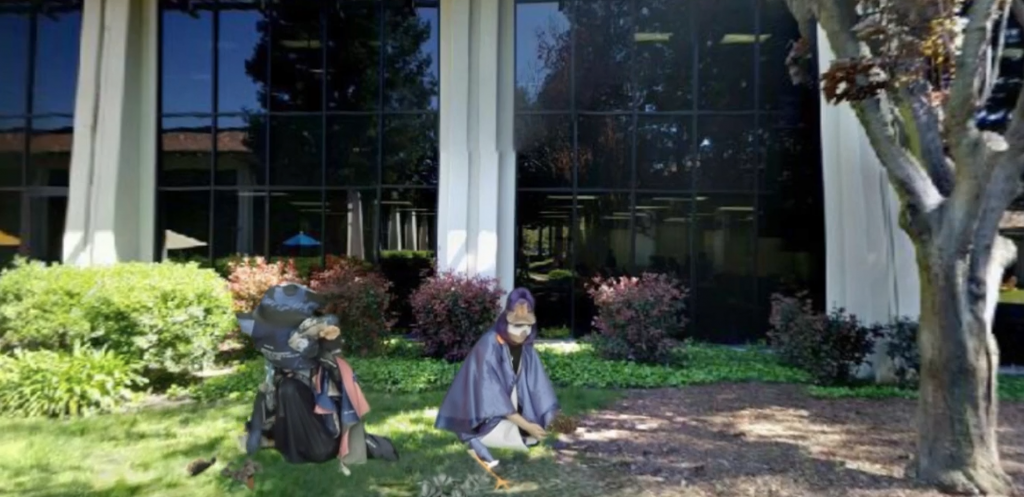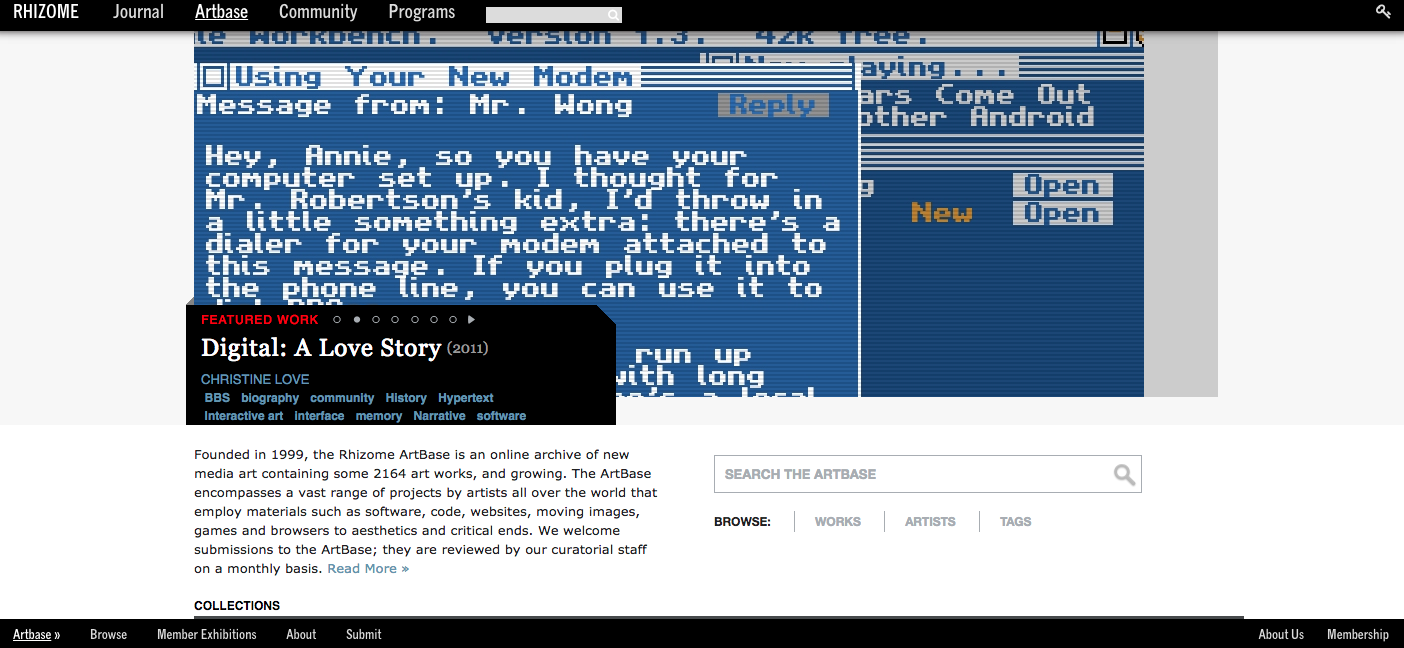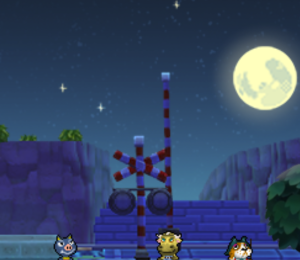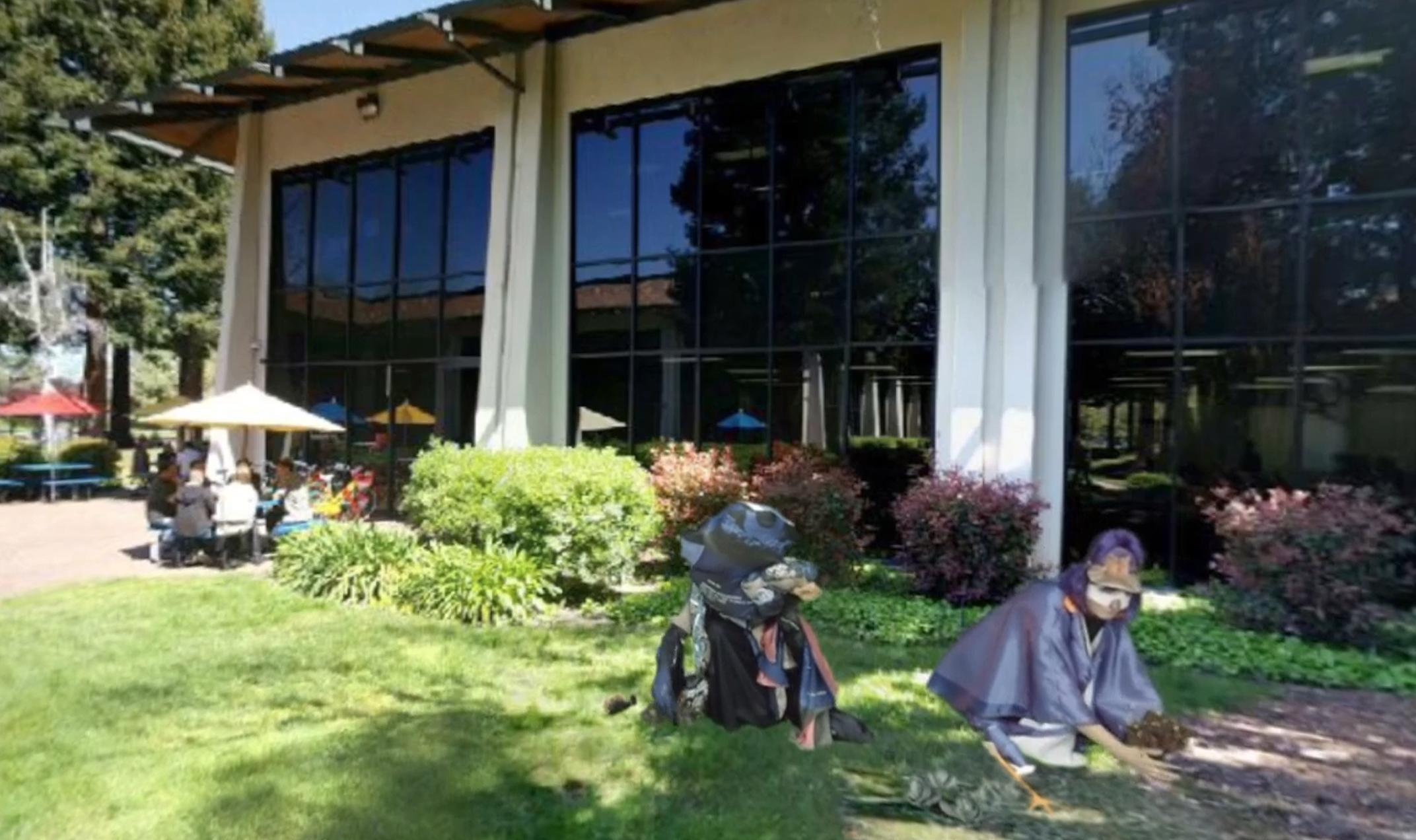As users immersed in this digital world, our data is collected, harvested, used and then concealed from us, despite being the creators. Judith Sönnicken does not just sympathize with us, she challenges this system and places the power back in our hands. Judith and her two interdimensional space travelers are insurgents in the battle against centralized information systems, and by making the piece interactive she hands us the controller and lets us revel in the thrills of beating the system. Google Gardening makes its audience crusaders who ravage against the corporate geographies from which our real-life interactions are harvested. These fleeting moments of what feels like pure anarchy come immediately crashing down when you realize you still entirely exist within and use the system as your weapon. This sobering moment is the very crux of the New Aesthetic and the impact it has on its audience. In his essay “The New Aesthetic and its Politics,” James Bridle describes the New Aesthetic as the “increasing appearance of the visual language of digital technology and the internet in the physical world, and the blending of the virtual and physical” (Bridle, 2017). Judith Sönnicken perfectly encapsulates and represents this genre in Google Gardening.
She synthesizes physical and virtual elements while also performing the fundamental function of New Aesthetic art: seeking to assess the current digital space critically while also residing within and using the space it seeks to critique as a tool for its commentary. Art that plays in the New Aesthetic realm forces us to consider the contradiction of criticizing these virtual systems that make up the digital world, while also willingly continuing to exist within this digital space.
Staying true to the New Aesthetic, this piece is littered with paradoxes begging us to consider the implication of each one. On its most shallow surface, there is a clear opposition between humans creating a genesis in nature, placed within the context of a virtual reality garden, created through the synthesis of different media forms. It is the blending of virtual and physical in its most elementary form. The opposition between the physical and virtual that comprise this piece can be organized most simply into the three components of its technological construction. First, a 360-degree JPG of Googleplex campus acquired through an anonymous Google employee. This is the technological documentation of a physical space, which was provided by an employee hacking into a virtual space. This is my favorite aspect of the piece because of the satisfaction in knowing Judith, our comrade in this battle, has successfully invaded Google’s physical and virtual barriers thanks to the actions of a turncoat.
The next layer consists of the green screen recording of the actors planting the flora. In this instance the physicality of the real, tangible human interaction with nature is documented and made virtual and eternal thanks to technological mechanisms. Finally, the step where perhaps this synthesis of physical and virtual elements is most palpable, is the audio accompanying the piece. The artist explains that the audio is biofeedback of plants responding to human touch created by “the physical, bodily encounter and auditive interaction of the protagonists, recorded through contact microphones.” (Sönnicken, 2019). In this instance the user experiences the pinnacle of physical, natural, and human interaction being manufactured by technology and transformed into a purely digital form. These fusions of physical and virtual are striking because rationally physical and virtual should combine as well as oil and vinegar, however, visually they actually create something fairly pleasant. Just when I begin to consider the compatibility of this combination, I am interrupted by constant glitching and immediately reminded of their incompatibility.

Another paradox in Google Gardening is revealed when we consider Judith’s decision to hack into Googleplex specifically, and the implications of this decision. Google’s creation of AdWords drastically changed the amount of data the platform needed to harvest in order to better target ads and cultivate as much money as possible. In Hito Steyerl’s essay titled “A Sea of Data: Apophenia and Pattern (Mis-) Recognition,” she compares the sorting of signal and noise in accumulated data to historic Neolithic practices. She makes the observation that “expressions of life as reflected in data trails become a farmable, harvestable, minable resource managed by informational biopolitics” (Steyerl, 2017). Google Gardening addresses Google’s acquisition of massive amounts of personal data on users, which is the result of searches and purchases performed in the physical world, and how Google harvests this data into digital produce. Judith digs, literally and figuratively, even deeper into this idea, acknowledging the privatization of this virtual produce parallel to the privatization of Google’s physical environment, and the irony in protecting this knowledge from the real-life agents whose interactions it was harvested from.
Google Gardening compels us to consider our own responsibility in this dilemma. Google is often criticized for having a lack of transparency regarding user data, and this piece is emblematic of that criticism. However, it should be acknowledged that the same users criticizing the lack of transparency have had a hand in our own unknowing fate. James Bridle highlights an important societal disposition that exists among users, where a lack of understanding of complex technological systems often leads to a distaste or distrust of said systems, and ultimately an unwillingness to ever uncover an understanding. This attitude can be seen prevalently in the case of Google, where users are not always the experts on security and privacy and in order to prevent a misunderstanding Google needs to remain defensive. Mychee Smith, the lead project manager for transparency reports for Google, states “The average user is not aware of all the laws and policies that can impact the flow of information online, but we are” (Newman, 2018). Perhaps keeping the user population physically and virtually blockaded from all knowledge is instead just a precaution against a misunderstanding that has the potential to end in renunciation and abdication of the platform.
The New Aesthetic is grounded in a dilemma to provide critical commentary on the digital world while simultaneously utilizing the tools and platforms it provides. New Aesthetic art challenges its consumers to consider not what appears on the very surface level of the piece, but instead the different layers and components that went into making the piece, and the ironies found within those mechanisms, and Google Gardening accomplishes this. In Michael Connor’s essay “Post-Internet: What It Is and What It Isn’t” he epitomizes exactly what Judith achieves with Google Gardening as New Aesthetic art: “Not an airy declaration of independence, but a reckoning of one’s immersion”(Connor, 2017). All of the elements and paradoxes found within the many layers of this piece are designed to make us think critically about our occupancy in this digital world, and the consequences of this synthesis of virtual and physical. Judith invites us to invade these physical and virtual barriers and creates an army of digital insurgents out of her audience, who use the same digital weapons employed on them and turn them on their opponent.
You can view Google Gardening here.
Sources:
Bridle, James. “The New Aesthetic and It’s Politics.” In You Are Here: Art After the Internet, 21. Manchester: HOME, 2017.
Connor, Michael. “Post Internet: What It Is and What It Was.” In You Are Here: Art After the Internet, 57. Manchester: HOME, 2017.
Newman, Lily Hay. “The Privacy Battle to Save Google From Itself.” Wired. November 02, 2018. Accessed April 09, 2019. https://www.wired.com/story/google-privacy-data/.
Steyerl, Hito. “A Sea of Data: Apophenia and Pattern (Mis-)Recognition.” In Duty Free Art: Art in the Age of Planetary Civil War, 47. Brooklyn, NY: Verso, 2017.
 Hannah Grow is a Marketing major at the University of Richmond. She is currently finishing up her senior year and is devoting her remaining time in Richmond towards finding the best margarita the city has to offer.
Hannah Grow is a Marketing major at the University of Richmond. She is currently finishing up her senior year and is devoting her remaining time in Richmond towards finding the best margarita the city has to offer.



